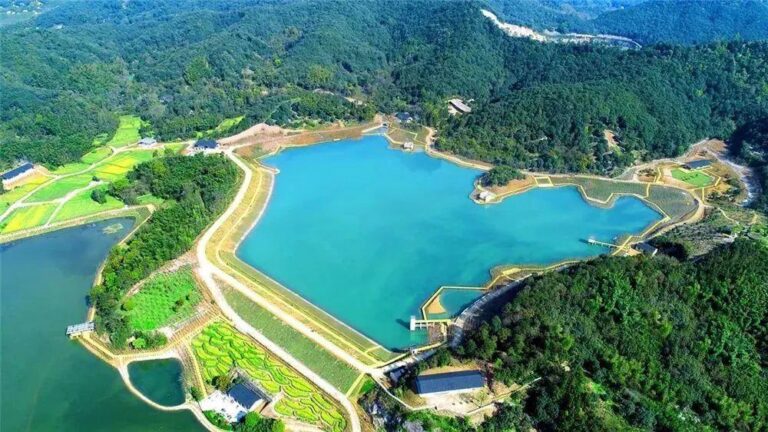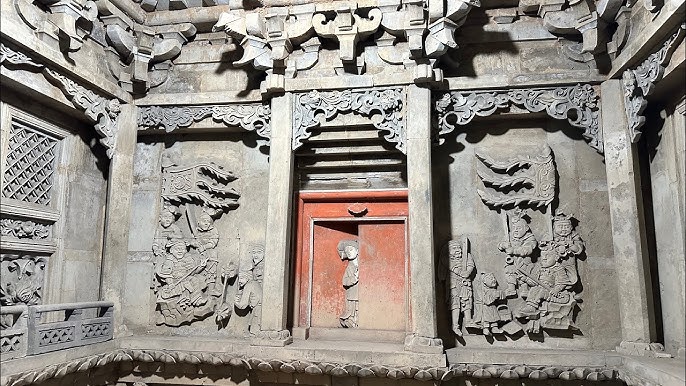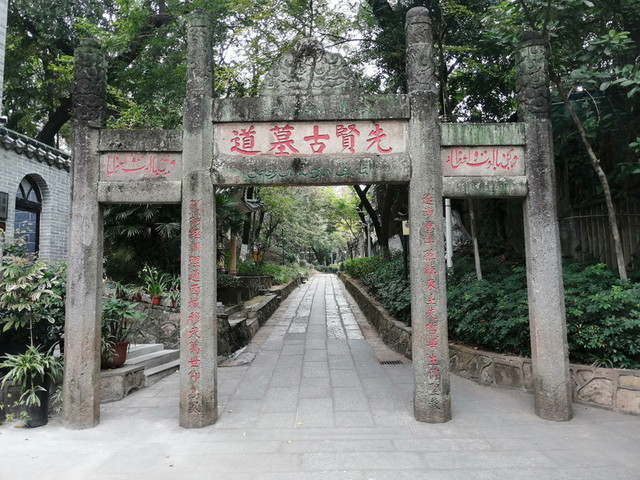Unlocking the Secrets of Yangzhou Puhading Mu: Nature and Culture Unite
An Essential Guide to Visiting Yangzhou Puhading Mu
In This Guide
- An Essential Guide to Visiting Yangzhou Puhading Mu
- The Rich History of Yangzhou Puhading Mu
- Main Highlights: What to See at Yangzhou Puhading Mu
- Planning Your Visit: A Practical Guide
- Tickets, Hours, and Booking
- How to Get There
- Local Cuisine and Accommodation
- Frequently Asked Questions
- Final Thoughts on Your Trip
In the heart of Yangzhou, a city known for its rich history and exquisite gardens, lies a unique cultural gem: the Puhading Mu, or Puhading Tomb. This site serves as a poignant reminder of the historical connections between China and the Islamic world, particularly during the Southern Song Dynasty. Built in honor of Puhading, a descendant of the Prophet Muhammad who arrived in Yangzhou to spread Islam, this tomb blends Arabic architectural elements with traditional Chinese landscaping, creating a serene environment that invites reflection and exploration.
The Puhading Tomb is more than just a burial site; it symbolizes the enduring friendship and cultural exchange between China and Arab nations. Its serene gardens and the adjacent mosque offer visitors a glimpse into the harmonious coexistence of different cultures and faiths. As you wander through the tranquil pathways lined with lush greenery and intricate Islamic designs, you’ll feel transported to a space that transcends time, inviting you to ponder the rich tapestry of history that has shaped this remarkable region.
With its roots dating back to the 13th century, the tomb has been preserved and revered through the ages, making it not only a significant religious site but also an important cultural landmark. As you delve into the stories etched in the stone walls and the monuments surrounding the tomb, you’ll uncover the legacy of Puhading and the profound impact of his teachings on the local community. Whether you are a history enthusiast, a spiritual seeker, or simply a curious traveler, a visit to Puhading Mu promises a captivating experience that will enrich your understanding of Yangzhou’s diverse heritage.
The Rich History of Yangzhou Puhading Mu
Nestled in the vibrant city of Yangzhou, the Puhading Mu, or Puhading Cemetery, serves as a poignant reminder of the rich cultural exchanges that have shaped this region over centuries. Established during the Southern Song Dynasty (1127-1279), the cemetery is dedicated to Puhading, a prominent Arab figure believed to be a descendant of the Prophet Muhammad. His arrival in Yangzhou during the Xianchun era (1265-1274) marked a significant moment in the city’s history, as he was instrumental in introducing and propagating Islam in China.

Yangzhou Puhading Mu.
Originally constructed as a burial site for Puhading, the cemetery soon became the final resting place for several other Arab individuals, symbolizing the early interactions between Chinese and Arab cultures. The architectural style of the cemetery is a unique blend of Islamic and Chinese elements, making it a noteworthy example of cultural fusion. Its design reflects the solemnity of Islamic tradition while incorporating the intricate artistry characteristic of Chinese gardens.
The significance of the Puhading Mu was recognized by subsequent Chinese emperors. During the Ming Dynasty, Emperor Yongle regarded the site as a national treasure and issued decrees to ensure its protection. The Qing Dynasty continued this tradition, with multiple restorations enhancing the site’s features and preserving its historical inscriptions. Among these is the “Historical Record of the Sage” erected during the reign of Emperor Guangxu, which chronicles Puhading’s contributions to Islamic teachings in China.
Today, the cemetery comprises three main sections: the burial area, which houses Puhading’s tomb alongside others; a mosque where the local Muslim community gathers for prayers; and a surrounding park that adds to the serene atmosphere. The Puhading Mu not only stands as a beautiful architectural site but also as a testament to the enduring legacy of cultural dialogue and the shared history between the Arab world and China. It invites visitors to reflect on the interconnectedness of civilizations and the rich tapestry of stories that have emerged from such exchanges throughout history.
Main Highlights: What to See at Yangzhou Puhading Mu
Nestled along the eastern bank of the ancient Grand Canal in Yangzhou, the Puhading Mu (普哈丁墓) is a remarkable testament to the city’s historical ties with the Arab world. This unique memorial complex honors the legacy of Puhadin, a 16th descendant of the Prophet Muhammad, who is believed to have arrived in Yangzhou during the Southern Song Dynasty (1265–1274) to spread Islam.

Yangzhou Puhading Mu.
Visitors to the Puhading Mu will find a captivating blend of Islamic and Chinese architectural styles. The complex is divided into three main areas: the mausoleum, which houses Puhadin’s tomb along with several other Arab graves; a mosque that serves as a place of worship; and the surrounding gardens that enhance the tranquil atmosphere. The architecture features intricate designs that harmoniously merge traditional Islamic motifs with the elegance of Chinese garden aesthetics, creating a serene environment for reflection and exploration.
One of the highlights of this site is the beautifully maintained mosque, built during the Qing Dynasty, which features a prayer hall adorned with Arabic calligraphy and an impressive mihrab. The historical significance of Puhading Mu is underscored by its recognition as a national protected cultural heritage site, reflecting its importance in fostering cultural exchanges between China and the Arab world.
In addition to its religious and historical value, the gardens surrounding the mausoleum provide a picturesque setting, ideal for leisurely strolls. The site is also home to several ancient Arabic gravestones from the Yuan Dynasty, offering further insight into the rich tapestry of cultural interactions that have shaped Yangzhou over the centuries.
For travelers seeking a deeper understanding of Yangzhou’s diverse cultural heritage, a visit to Puhading Mu is an enriching experience, showcasing the intersection of faith, history, and architectural beauty in a single breathtaking location.
Planning Your Visit: A Practical Guide
Visiting Yangzhou Puhading Mu: A Practical Guide
Nestled in Yangzhou, Jiangsu Province, the Puhading Mu (普哈丁墓), also known as Puhading Garden, is a significant historical site that beautifully illustrates the cultural exchanges between China and the Islamic world. Here’s everything you need to know for a smooth visit to this unique destination.

Yangzhou Puhading Mu.
Location and Access
Puhading Mu is located on the southern bank of the Liberation Bridge, along the east side of the ancient Grand Canal. Its central location makes it easily accessible from various parts of Yangzhou. Visitors can reach the site via local public transport, taxis, or by walking from nearby attractions such as the Slender West Lake and Dongguan Street.
Opening Hours
The site is open daily from 6:00 AM to 5:00 PM. To make the most of your visit, aim to arrive early in the day to explore the tranquil gardens and appreciate the intricate architecture without the crowds.
Admission Fees
While specific entry fees may vary, it is generally advisable to check local sources or ticketing websites for the most current prices. Group tickets and online bookings can often provide discounts, so consider purchasing in advance to save money.
What to See
Puhading Mu is not only a burial site but also a cultural complex that includes:
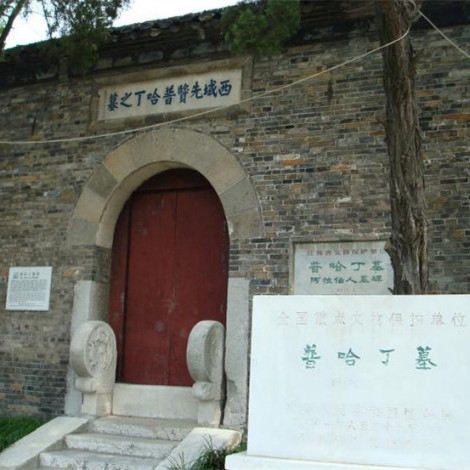
Yangzhou Puhading Mu.
- The Tomb of Puhading: The main attraction, said to be the final resting place of the revered Arab missionary Puhading, a descendant of the Prophet Muhammad.
- The Mosque: A small but beautifully appointed mosque where Muslim visitors can pray, showcasing classic Islamic architectural elements.
- The Garden: The surrounding gardens combine traditional Chinese landscaping with Islamic architectural features, creating a serene atmosphere perfect for leisurely walks and reflection.
Cultural Significance
Puhading Mu serves as a testament to the historical ties between Yangzhou and the Arab world. The site is a symbol of intercultural dialogue and religious exchange, making it a meaningful place for both local and international visitors. Look for inscriptions and historical markers that provide insight into the life of Puhading and the spread of Islam in China.
Visitor Tips
- Dress Respectfully: As a site of cultural and religious significance, visitors should dress modestly, particularly when entering the mosque.
- Photography: While photography is allowed, be mindful of signs indicating restricted areas, especially within the mosque.
- Guided Tours: Consider joining a guided tour to gain deeper insights into the historical context and architectural details of the site.
- Weather Considerations: The site is outdoors; therefore, check the weather forecast and dress accordingly. Bring an umbrella or hat during the summer months, and dress in layers during cooler seasons.
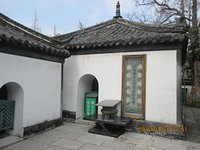
Yangzhou Puhading Mu.
Nearby Attractions
After visiting Puhading Mu, take the time to explore other cultural landmarks in Yangzhou:
– Slender West Lake: A picturesque lake known for its scenic beauty and classical gardens.
– Dongguan Street: A historic street lined with shops and eateries where you can sample local delicacies and shop for souvenirs.
Conclusion
A visit to Puhading Mu is not just about appreciating its architectural beauty; it’s about understanding the rich tapestry of cultures that have woven through Yangzhou’s history. Whether you are a history enthusiast, a cultural explorer, or simply seeking a peaceful retreat, Puhading Mu offers a unique glimpse into the past and a tranquil space for contemplation.
Tickets, Hours, and Booking
When planning your visit to Yangzhou Puhading Mu (普哈丁墓), it’s essential to know the ticketing options and operational details to ensure a smooth experience.
Ticket Information
-
Admission Fee: The entrance to Puhading Mu is generally affordable, with ticket prices typically starting around ¥20 (approximately $3). It’s advisable to check for any seasonal discounts or promotional offers that may be available.
-
Opening Hours: The site is open daily from 6:00 AM to 5:00 PM, allowing ample time for exploration. It’s best to arrive early to appreciate the serene atmosphere and avoid crowds.
-
Purchasing Tickets: Tickets can be purchased on-site at the entrance. However, for convenience, you might consider booking in advance through online travel platforms such as Trip.com or other authorized ticket vendors. This can help you skip potential lines during peak visiting hours.
-
Guided Tours: For those interested in a deeper understanding of the site’s historical significance, guided tours are often available. These can enhance your experience by providing insights into the unique blend of Islamic and traditional Chinese architecture present at the cemetery.
Important Notes
-
Weather Considerations: Be mindful of weather conditions before your visit. Certain areas of the site may be temporarily closed due to adverse weather conditions, such as heavy rain or storms.
-
Accessibility: The cemetery is designed to be accessible, but certain areas may involve uneven terrain. Visitors with mobility concerns should plan accordingly.
-
Cultural Respect: As this site holds religious significance, visitors are encouraged to maintain a respectful demeanor while exploring.
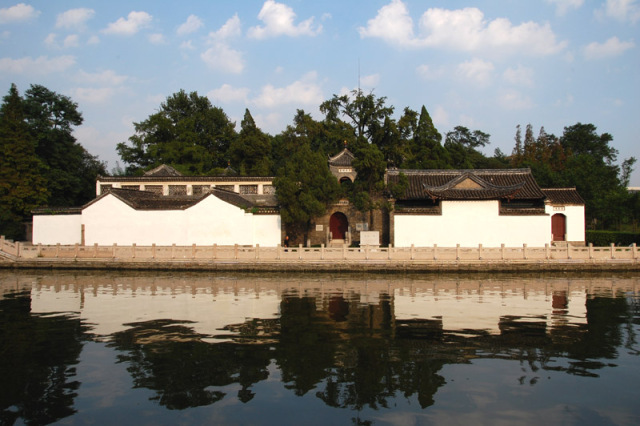
Yangzhou Puhading Mu.
With these details in mind, you can enjoy your visit to Yangzhou Puhading Mu, soaking in the rich cultural heritage and serene landscapes that this unique site has to offer.
How to Get There
Getting to Yangzhou Puhading Mu, or Puhading Cemetery, is relatively straightforward, thanks to its well-connected transportation network. This site, located along the eastern bank of the ancient Grand Canal in Yangzhou, is accessible via various modes of transport, ensuring a smooth journey for visitors.
Arriving by Air
The nearest major airport to Yangzhou is Yangzhou Taizhou International Airport (YTY), which is approximately 30 kilometers away from the city center. This airport serves several domestic flights primarily from major cities like Beijing, Shanghai, and Guangzhou. From the airport, visitors can take a taxi, which is the most convenient option, or utilize airport shuttle services that connect to various points in Yangzhou, including the city center.

Yangzhou Puhading Mu.
Arriving by Train
Yangzhou is well-connected by rail, making it an attractive option for those traveling from nearby cities. The Yangzhou Railway Station offers high-speed train services from major hubs such as Nanjing, Shanghai, and Suzhou. The station is just a short taxi ride from Puhading Mu, typically taking around 15-20 minutes. For those on a budget, local buses also run from the train station to various parts of the city.
Local Transportation
Once in Yangzhou, getting to Puhading Mu is simple. The cemetery is situated in the downtown area, and several local transportation options are available:
-
Taxi: Taxis are readily available and relatively inexpensive. Most drivers are familiar with Puhading Mu, but it’s a good idea to have the name written in Chinese or a map handy for reference.
-
Public Bus: Several bus lines serve the area around Puhading Mu. Look for routes that stop at “解放桥” (Jiefang Bridge) or “普哈丁园” (Puhading Garden). Bus fares are quite low, costing just a few yuan.
-
Bicycle Rentals: For a more leisurely approach, consider renting a bicycle. Yangzhou is known for its beautiful canals and parks, and cycling provides a unique way to explore the city while making your way to the cemetery.
Walking
If you’re already in the vicinity of the Grand Canal or nearby attractions like the Slender West Lake (瘦西湖), walking to Puhading Mu can be a pleasant experience. The area is pedestrian-friendly, and the scenic routes along the canal make it enjoyable to take in the local sights.
Accessibility
Puhading Mu is accessible for visitors with mobility challenges, though some areas may have uneven pathways due to the historical nature of the site. It’s advisable to contact the venue in advance if you require specific assistance or accommodations.
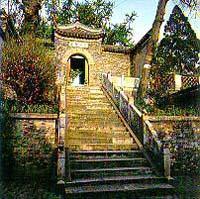
Yangzhou Puhading Mu.
Summary
With its strategic location and various transport options, visiting Puhading Mu is convenient for travelers exploring Yangzhou. Whether arriving by air, train, or local transport, the journey to this significant cultural and historical site is both accessible and enjoyable.
Local Cuisine and Accommodation
When visiting the serene Yangzhou Puhading Mu (普哈丁墓), a site steeped in history and cultural significance, you’ll want to complement your exploration with delightful culinary experiences and comfortable accommodations. Here’s a guide to help you make the most of your stay in this charming city.
Dining Options
Yangzhou is renowned for its unique culinary offerings, particularly its Huaiyang cuisine, which balances delicate flavors and artistic presentation. Here are some must-try dining spots near Puhading Mu:
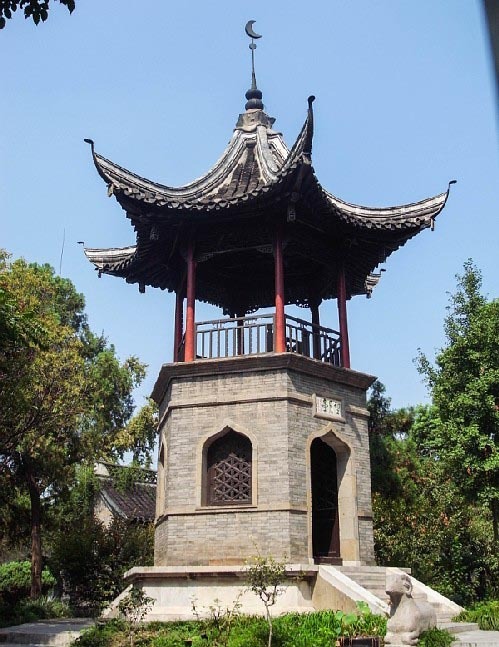
Yangzhou Puhading Mu.
-
Yangzhou Yan (扬州宴)
Located within the Yangzhou Shouxi Lake Hot Spring Resort, this restaurant is celebrated for its traditional Huaiyang dishes. The atmosphere is upscale, making it perfect for a memorable dining experience. Don’t miss their signature dishes, such as braised fish and crab. -
Shi Wei Tian (食为天)
A local favorite, this restaurant serves authentic Huaiyang cuisine at reasonable prices. The menu features a variety of classic dishes, ensuring that you can enjoy the local flavors without breaking the bank. -
Mao Pai Lou (毛牌楼)
This eatery is famous for its delicious dumplings and noodles, which are perfect for a quick and satisfying meal. It’s a great spot to experience the bustling local dining scene. -
Jiangsu Cuisine Museum Restaurant (扬州淮扬菜博物馆餐厅)
For a cultural twist, dine at this museum restaurant where you can enjoy traditional dishes while learning about the history of Jiangsu cuisine. The setting is both educational and delicious. -
Qing Yuan Tea House (趣园茶社)
A charming place to relax and sip tea, this tea house also offers light snacks and pastries. It’s an excellent option for a leisurely afternoon break after visiting the nearby Puhading Mu.
Accommodation
Finding a comfortable place to stay in Yangzhou can enhance your overall experience. Here are some recommended hotels that cater to various preferences and budgets:
-
Yangzhou Shangri-La Hotel
This luxury hotel offers upscale accommodations with stunning views of the city and the nearby Shouxi Lake. Guests can enjoy world-class amenities, including a spa, fitness center, and fine dining options. -
Hotel Nikko Yangzhou
A modern hotel providing stylish rooms equipped with all necessary conveniences, it’s located conveniently for exploring local attractions. The on-site restaurant serves a variety of international and local dishes. -
Yuyuan Hotel (扬州怡园饭店)
A more budget-friendly option, this hotel combines comfort with affordability. It’s well-reviewed for its clean rooms and friendly staff and is situated close to the main attractions. -
GreenTree Inn Yangzhou East Gate Hotel
Another economical choice, this hotel offers basic amenities and a convenient location. It’s perfect for travelers looking to explore Yangzhou without spending too much on accommodation. -
Yangzhou Hanting Hotel
This hotel is ideal for budget-conscious travelers, offering simple, comfortable rooms. Its location is central, making it easy to access nearby dining and attractions.
Conclusion
With a variety of dining and lodging options, Yangzhou provides a delightful blend of culinary experiences and comfortable accommodations. Whether you’re savoring Huaiyang cuisine or relaxing in a cozy hotel, your visit to Puhading Mu will be enhanced by the warmth and flavors of this historic city.
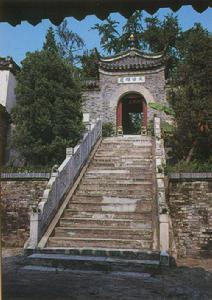
Yangzhou Puhading Mu.
Frequently Asked Questions
-
What is the significance of Yangzhou Puhading Mu?
Yangzhou Puhading Mu, also known as Puhading Garden, is a historical site dedicated to the memory of Puhading, a descendant of the Prophet Muhammad who is believed to have spread Islam in Yangzhou during the Southern Song Dynasty. The site serves as a testament to the cultural exchange between China and Arab nations. -
What are the main features of Puhading Mu?
The complex beautifully integrates Islamic architectural elements with traditional Chinese landscape design. It includes a cemetery, a mosque, and a garden, showcasing the unique blend of styles and cultures. Visitors can explore the tomb of Puhading, several other Arab graves, and a small mosque. -
What are the opening hours for Puhading Mu?
Puhading Mu is typically open from 6:00 AM to 5:00 PM daily. However, it is advisable to check for any changes in hours or special closures before planning your visit. -
Is there an entry fee to visit Puhading Mu?
Yes, there is an admission fee to enter Puhading Mu. Pricing may vary, so it’s recommended to check local resources or ticket booking platforms for the most current information. -
How can I reach Puhading Mu using public transport?
Puhading Mu is accessible via public transportation in Yangzhou. Visitors can take local buses or taxis to reach the site, which is conveniently located near the historic Liberation Bridge and the east bank of the ancient Grand Canal. -
Are there any guided tours available?
Guided tours are often available at Puhading Mu, providing insightful commentary on the history and significance of the site. Visitors can inquire about tours at the entrance or through local tourism offices. -
Can I take photographs inside Puhading Mu?
Photography is generally allowed in Puhading Mu, but visitors should be respectful of the site’s religious nature and follow any specific guidelines provided at the entrance. -
What should I know before visiting Puhading Mu?
It’s advisable to dress modestly, especially when visiting the mosque. Additionally, be aware of potential weather conditions that may affect your visit, such as rain or extreme temperatures. Lastly, consider exploring nearby attractions in Yangzhou to enhance your travel experience.
Final Thoughts on Your Trip
Visiting Yangzhou’s Puhading Mu is not just an exploration of a historical site; it is a journey into the heart of cultural exchange between East and West. This unique burial ground serves as a testament to the enduring legacy of Islam in China, showcasing the seamless blend of traditional Arabic architecture with the elegance of Chinese garden design.
As you wander through the tranquil grounds, you’ll appreciate the meticulous craftsmanship that reflects centuries of history and the significance of Puhading’s mission to promote understanding across cultures. Whether you’re drawn by spiritual curiosity, architectural beauty, or a desire to learn more about the rich tapestry of Yangzhou’s past, Puhading Mu offers an enriching experience that resonates deeply with every visitor.
Embrace the opportunity to connect with this remarkable heritage, and let the peaceful ambiance inspire a sense of reflection and appreciation for the diverse narratives that shape our world today.
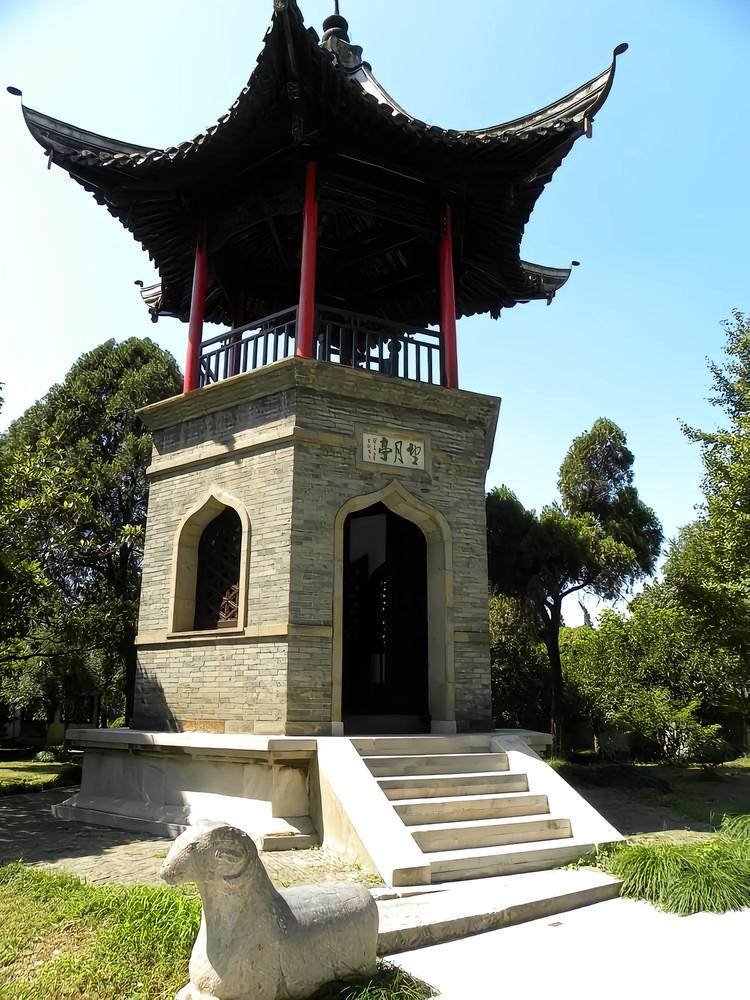
Yangzhou Puhading Mu.

